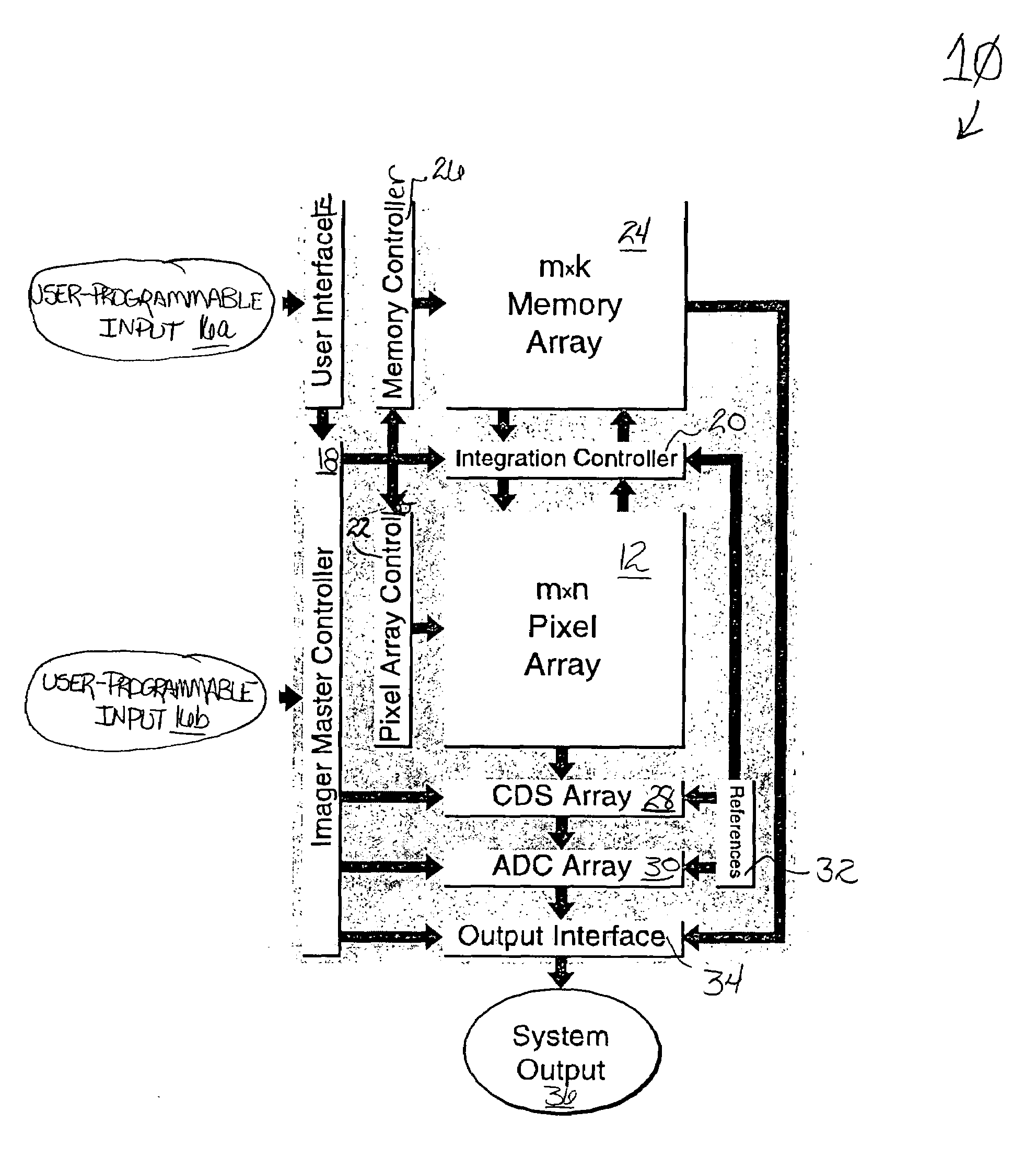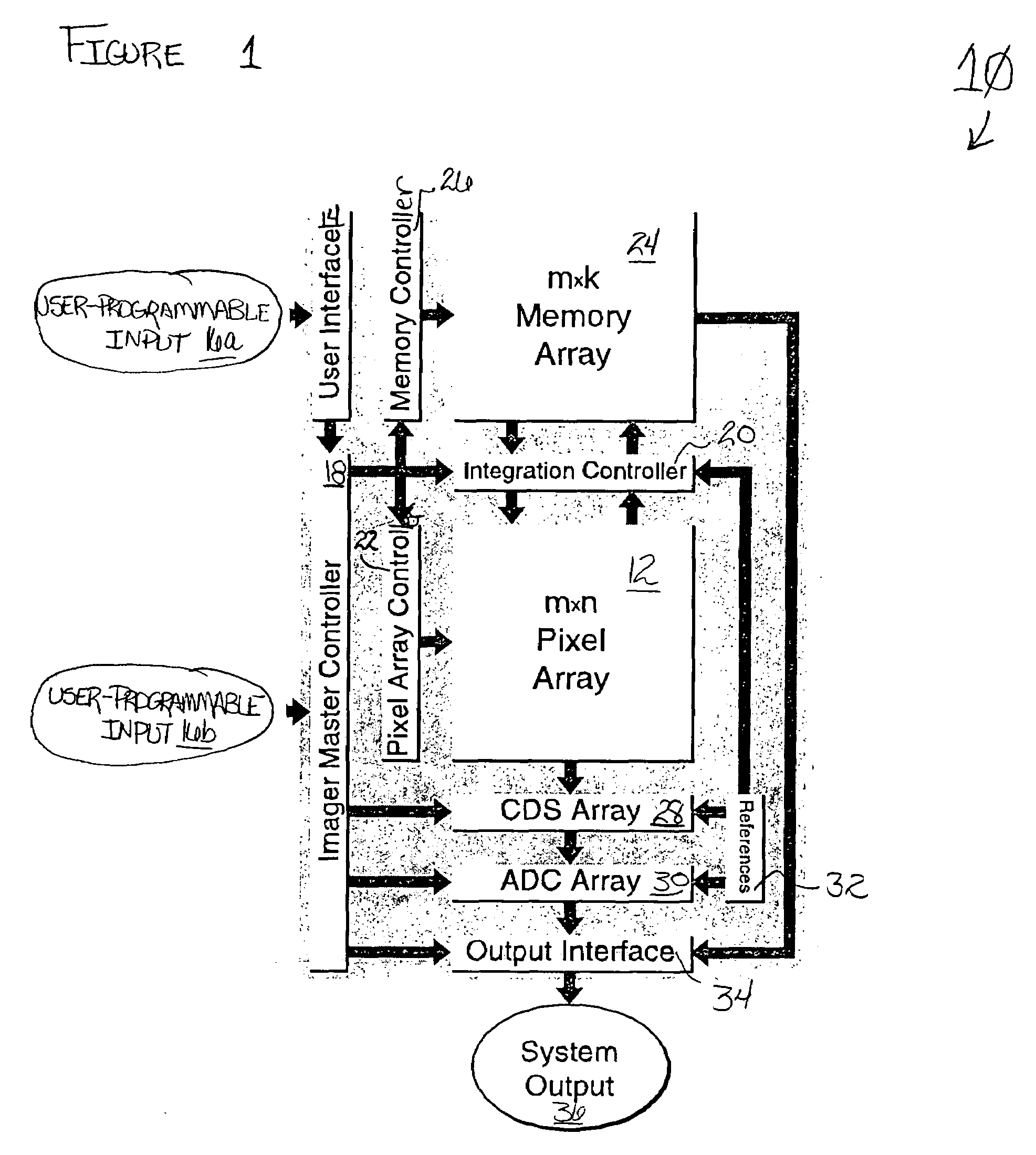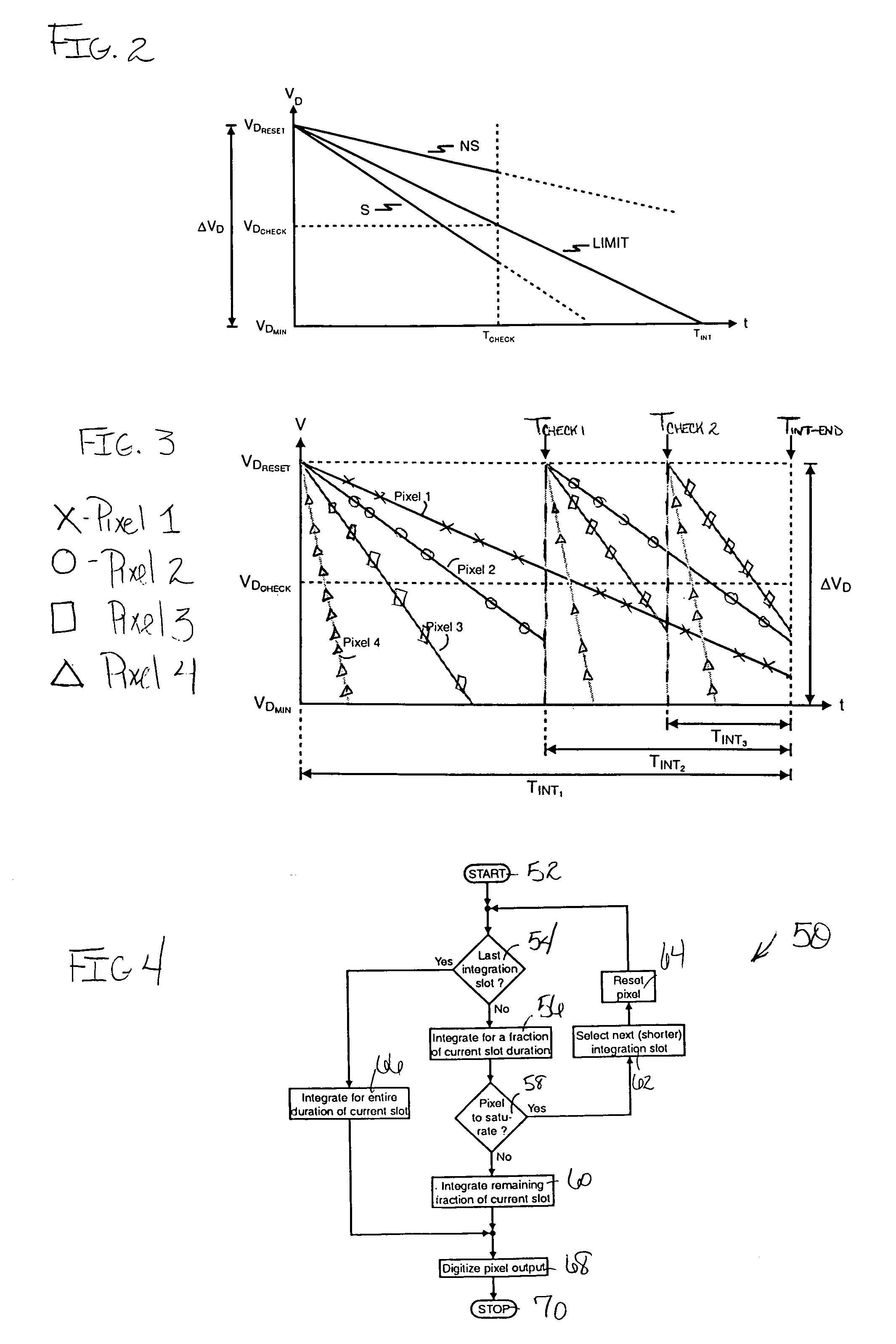Single-chip imager system with programmable dynamic range
a single-chip imager and dynamic range technology, applied in the field of image sensors, can solve the problems of reducing the dynamic range of cmos imagers, the limiting performance characteristic of imagers, and the inability to provide sufficient degree of dynamic range expansion, etc., to achieve elegantly simple input/output connections and cost-effective production
- Summary
- Abstract
- Description
- Claims
- Application Information
AI Technical Summary
Benefits of technology
Problems solved by technology
Method used
Image
Examples
Embodiment Construction
[0060]Referring to FIG. 1, there is shown an example imager system 10 provided by the invention. The imager system includes a pixel array 12 having a number, m, of pixel rows and a number, n, of pixel columns. This array can consist of, e.g., CMOS pixels, CCD pixels, or other selected pixel technology. The specific example provided here will be directed to CMOS pixel technology, but it is to be recognized that the imager system of the invention is not limited to such. Whatever pixel technology is employed, the pixel array is configured to enable exposure of the array to a scene for capture of illumination for producing an image of the scene.
[0061]In accordance with the invention, all of the pixels in the array can be independently reset and further can be non-destructively read. These features enable the pixel-specific and user-programmable dynamic range control of the invention described below. The user interface 14 of the system provides an abstraction layer between a user and the...
PUM
 Login to View More
Login to View More Abstract
Description
Claims
Application Information
 Login to View More
Login to View More - R&D
- Intellectual Property
- Life Sciences
- Materials
- Tech Scout
- Unparalleled Data Quality
- Higher Quality Content
- 60% Fewer Hallucinations
Browse by: Latest US Patents, China's latest patents, Technical Efficacy Thesaurus, Application Domain, Technology Topic, Popular Technical Reports.
© 2025 PatSnap. All rights reserved.Legal|Privacy policy|Modern Slavery Act Transparency Statement|Sitemap|About US| Contact US: help@patsnap.com



